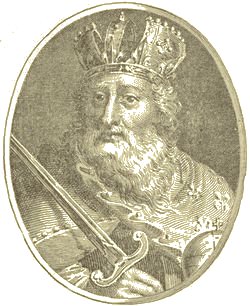 Charlemagne, also known as Charles the Great, was born on April 2, 748 (alternate proposed birth years include 742 and 747), and became one of the most influential figures in European history. As King of the Franks from 768 and later the Emperor of the Carolingian Empire from 800 until his death in 814, Charlemagne played a critical role in the shaping of medieval Europe.
Charlemagne, also known as Charles the Great, was born on April 2, 748 (alternate proposed birth years include 742 and 747), and became one of the most influential figures in European history. As King of the Franks from 768 and later the Emperor of the Carolingian Empire from 800 until his death in 814, Charlemagne played a critical role in the shaping of medieval Europe.
Charlemagne was the son of Pepin the Short and Bertrada of Laon. Upon his father's death, he initially co-ruled with his brother Carloman until Carloman's untimely death in 771, which left Charlemagne as the sole ruler. Charlemagne embarked on a series of military campaigns that significantly expanded his empire, including the conquest of the Lombards in Italy, the Saxons in present-day Germany, and parts of Spain from the Moors.
In 800, on Christmas Day, Pope Leo III crowned Charlemagne as the Emperor of the Romans, a title that revived the notion of a unified Christian empire in the West. This coronation marked the foundation of what would later become the Holy Roman Empire, cementing Charlemagne's legacy as a pivotal figure in European history.
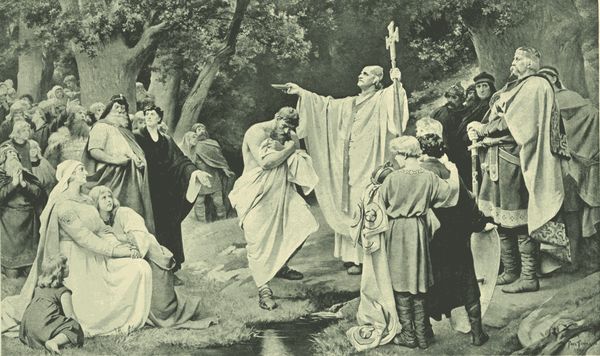 Charlemagne's reign was not only marked by military conquests but also by significant cultural and administrative reforms. He promoted the Carolingian Renaissance, a revival of art, culture, and learning based on classical models. He established a more centralized form of governance, improved legal systems, and encouraged the spread of Christianity.
Charlemagne's reign was not only marked by military conquests but also by significant cultural and administrative reforms. He promoted the Carolingian Renaissance, a revival of art, culture, and learning based on classical models. He established a more centralized form of governance, improved legal systems, and encouraged the spread of Christianity.
Charlemagne's influence extended far beyond his death on January 28, 814. His efforts to consolidate and expand his empire laid the groundwork for the development of modern Europe, earning him the title "Father of Europe." His legacy is remembered for uniting a fragmented continent and fostering a cultural and intellectual revival that had long-lasting effects on European civilization.
|
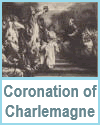
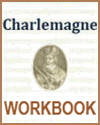
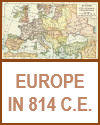
 Charlemagne, also known as Charles the Great, was born on April 2, 748 (alternate proposed birth years include 742 and 747), and became one of the most influential figures in European history. As King of the Franks from 768 and later the Emperor of the Carolingian Empire from 800 until his death in 814, Charlemagne played a critical role in the shaping of medieval Europe.
Charlemagne, also known as Charles the Great, was born on April 2, 748 (alternate proposed birth years include 742 and 747), and became one of the most influential figures in European history. As King of the Franks from 768 and later the Emperor of the Carolingian Empire from 800 until his death in 814, Charlemagne played a critical role in the shaping of medieval Europe.
 Charlemagne's reign was not only marked by military conquests but also by significant cultural and administrative reforms. He promoted the Carolingian Renaissance, a revival of art, culture, and learning based on classical models. He established a more centralized form of governance, improved legal systems, and encouraged the spread of Christianity.
Charlemagne's reign was not only marked by military conquests but also by significant cultural and administrative reforms. He promoted the Carolingian Renaissance, a revival of art, culture, and learning based on classical models. He established a more centralized form of governance, improved legal systems, and encouraged the spread of Christianity.






